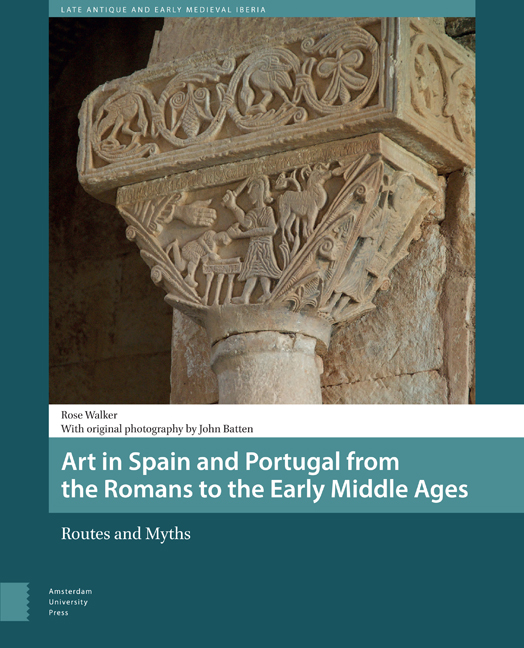Book contents
- Frontmatter
- Contents
- List of Illustrations
- Acknowledgements
- Conventions
- Abbreviations
- Introduction
- 1 The Lie of the Land: Art and Architecture Along the Roman Roads
- 2 Believing and Belonging: Late Antiquity and the Wider Mediterranean
- 3 The Visigothic Period: Fragmentation and Accretion
- 4 The Eighth and Ninth Centuries: Re-emergence and Invention
- 5 The Great Tenth Century
- 6 Dispersal After the Fall of the Caliphate
- 7 Trading Peace, Gold and Expertise, c. 1050-c. 1075
- 8 The Making of Romanesque: Reform and Synergy
- Epilogue
- Chronology 700-1100
- Bibliography of Cited Sources
- Index
4 - The Eighth and Ninth Centuries: Re-emergence and Invention
Published online by Cambridge University Press: 12 February 2021
- Frontmatter
- Contents
- List of Illustrations
- Acknowledgements
- Conventions
- Abbreviations
- Introduction
- 1 The Lie of the Land: Art and Architecture Along the Roman Roads
- 2 Believing and Belonging: Late Antiquity and the Wider Mediterranean
- 3 The Visigothic Period: Fragmentation and Accretion
- 4 The Eighth and Ninth Centuries: Re-emergence and Invention
- 5 The Great Tenth Century
- 6 Dispersal After the Fall of the Caliphate
- 7 Trading Peace, Gold and Expertise, c. 1050-c. 1075
- 8 The Making of Romanesque: Reform and Synergy
- Epilogue
- Chronology 700-1100
- Bibliography of Cited Sources
- Index
Summary
Studies of eighth- and ninth-century Christian art in the Spanish peninsula have traditionally used the label ‘Asturian art’ and treated it as an isolated phenomenon born of an incipient reconquista ideology. This chapter will argue that it was, on the contrary, far from isolated geographically, and that the rhythms of its production responded to those in the outside world, both north and south. The myth of the brave little kingdom that began the reconquista has to give way to another story. When Asturias exhibited military prowess, it could be directed at the Vikings as well as against al-Andalus. The rulers of the north and south shared the exposed Atlantic coast, and road travel across the centre occurred more often than the boundaries on maps suggest. Relations between north and south were more nuanced and more interesting than the traditional narrative, allowing both artistic and intellectual interaction. The analysis that follows will suggest that the renewal of building in the peninsula, which began in Córdoba in the second half of the eighth century, did not occur in the north until a sudden influx of wealth in the mid-ninth century enabled the purchase of the necessary expertise. In the south the same period saw new cultural stimuli flood into al-Andalus from Baghdad, whilst across the Pyrenees the court of Charles the Bald built on the cultural revival of Charlemagne. Around 900, internal conflict within the Muslim territories of al-Andalus briefly allowed the Christians of Asturias to imagine a future in which they might claim control of the peninsula. They expressed that optimistic vision through an antique architectural and decorative vocabulary that had been developed by the Byzantines, the Carolingians, and the Umayyads. The Asturian route into that vocabulary, and their inventive use of it, will be a major theme in this chapter.
711
The year 711 records the end of Visigothic rule in Spain. According to the universal Mozarabic Chronicle of 754, the preceding years had brought internal strife, famine, and plague, brightened only by the presence of some learned bishops of Toledo. That chronicle and the later Arabic sources agree on the main events of the invasion.
- Type
- Chapter
- Information
- Art in Spain and Portugal from the Romans to the Early Middle AgesRoutes and Myths, pp. 139 - 180Publisher: Amsterdam University PressPrint publication year: 2016



